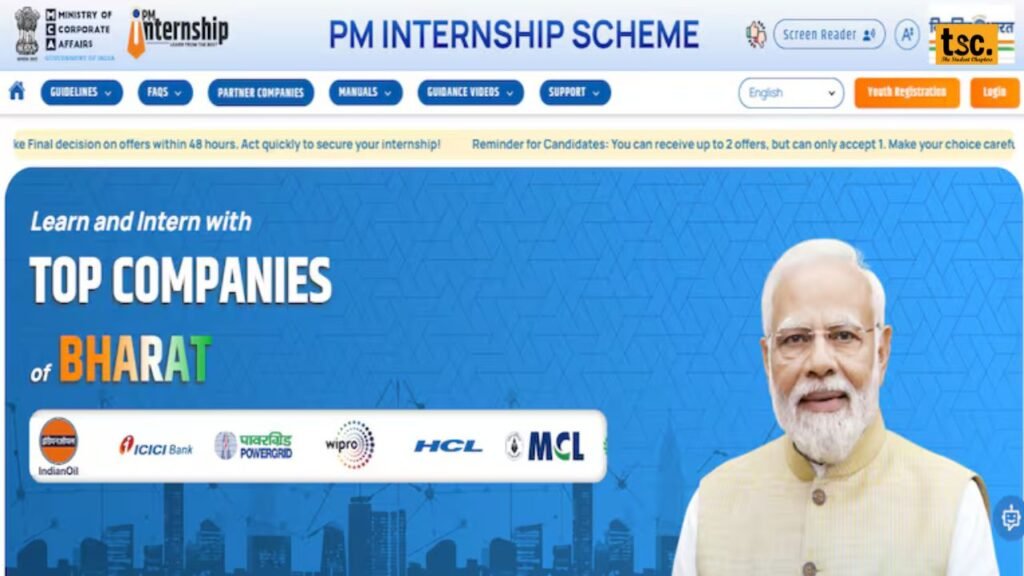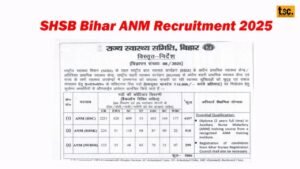PM Internship Scheme Sees Low Joining Rate: Only 6% of Students Join Companies Against 1.53 Lakh Offers!

On October 3, 2024, the Prime Minister launched the PM Internship Scheme. The predominant aim of the prime minister in joining the scheme is to provide internship opportunities to one crore youth in the top 500 companies within five years. It has been noted that the scheme saw a disappointing response as it was an ambitious goal!
As only 6% of students are joining companies, against 1.53 lakh offers. According to Union Finance Minister Nirmala Sitharaman, the pilot phase of the scheme witnessed a low acceptance rate, with only 28,141 candidates accepting internship offers out of 82,077 made by companies.
However, despite everything, the Ministry of Corporate Affairs has taken steps to boost participation. They will set up dedicated PMIS cells in companies and conduct awareness campaigns. With a budget allocation of ₹10,831 crore, the scheme’s success hinges on effective implementation and addressing the challenges hindering its progress.
Key Highlights of the PM Internship Scheme: Low Joining Rate
- Low Joining Rate: Only 6% of students joined companies against 1.53 lakh offers.
- Offer Acceptance Rate: The offer acceptance rate stands at 33%.
- Internship Opportunities: The scheme aims to provide internship opportunities to one crore youth in the top 500 companies within five years
- Pilot Project: The pilot project was launched on October 3, 2024, with a target to provide 1.25 lakh internship opportunities to the youth in one year.
Before proceeding further, take a look at: UP NEET UG Counselling 2025 Schedule Released: Key Dates and Eligibility Criteria!

Reasons Behind Low Joining Rate
- Regional Concentration: 43% of internships were concentrated in five states: Uttar Pradesh, Andhra Pradesh, Madhya Pradesh, Bihar, and Haryana. Many candidates were reluctant to relocate due to the low stipend and lack of sufficient relocation allowance.
- Low Stipend: The monthly stipend of ₹5,000 may not be sufficient to attract more candidates, particularly in urban areas where the cost of living is higher.
- Lack of Ownership: Poor assessment of workforce gaps and lack of ownership at the company level may have contributed to the low joining rate.
Do not miss out on reading on: Ambedkar University Delhi Opens Fresh PG Admissions for Non-CUET Applicants: A Second Chance for Aspiring Students!
Benefits of the PM Internship Scheme
- Practical Experience: The scheme provides young individuals with practical experience in top companies, enhancing their employability.
- Skill Development: The internship program focuses on developing industry-relevant skills, making participants more attractive to potential employers.
- Financial Support: Selected interns receive a monthly stipend of ₹5,000 and a one-time grant of ₹6,000.
Cast your eyes on: CBSE and CISCE Launch Fitness Initiatives to Combat Childhood Obesity!
Students’ Eligibility Criteria to Join Companies
- Age: Applicants must be between 21 and 24 years old.
- Education: Candidates should have completed class 10th, 12th, ITI, polytechnic diploma, or graduation.
- Income: Family annual income should be less than ₹8 lakh.
- Employment: Applicants should not be employed full-time or engaged in full-time education.

Government Initiatives to Boost the Scheme with Fancy Offers
- Dedicated Cells: The Ministry of Corporate Affairs has directed companies to set up dedicated PMIS cells to improve internship intake and management.
- Second Round: A second round of the pilot phase has been launched, inviting applications for over 100,000 internships in more than 300 companies.
- IEC Events: The government is conducting IEC events across India to promote participation and awareness about the scheme.
Check out: CBSE to Introduce 2-Tier STEM Curriculum for Classes 11 and 12: What You Need to Know!
Conclusion
The PM Internship Scheme has the potential to provide valuable industry experience to young individuals and enhance their employability. However, the low joining rate highlights the need for adjustments to the scheme’s design and implementation. The government can improve the effectiveness of the scheme and achieve its goals. Which higher authorities have to address the issues of regional concentration, stipend, and ownership?
Stay tuned on our website, as if any official information pops up, we will update you in minutes! If you want all the latest updates on time, then join our student community on WhatsApp!
Choose the right career yourself by booking personal guidance from professionals on Mytagapp.com







